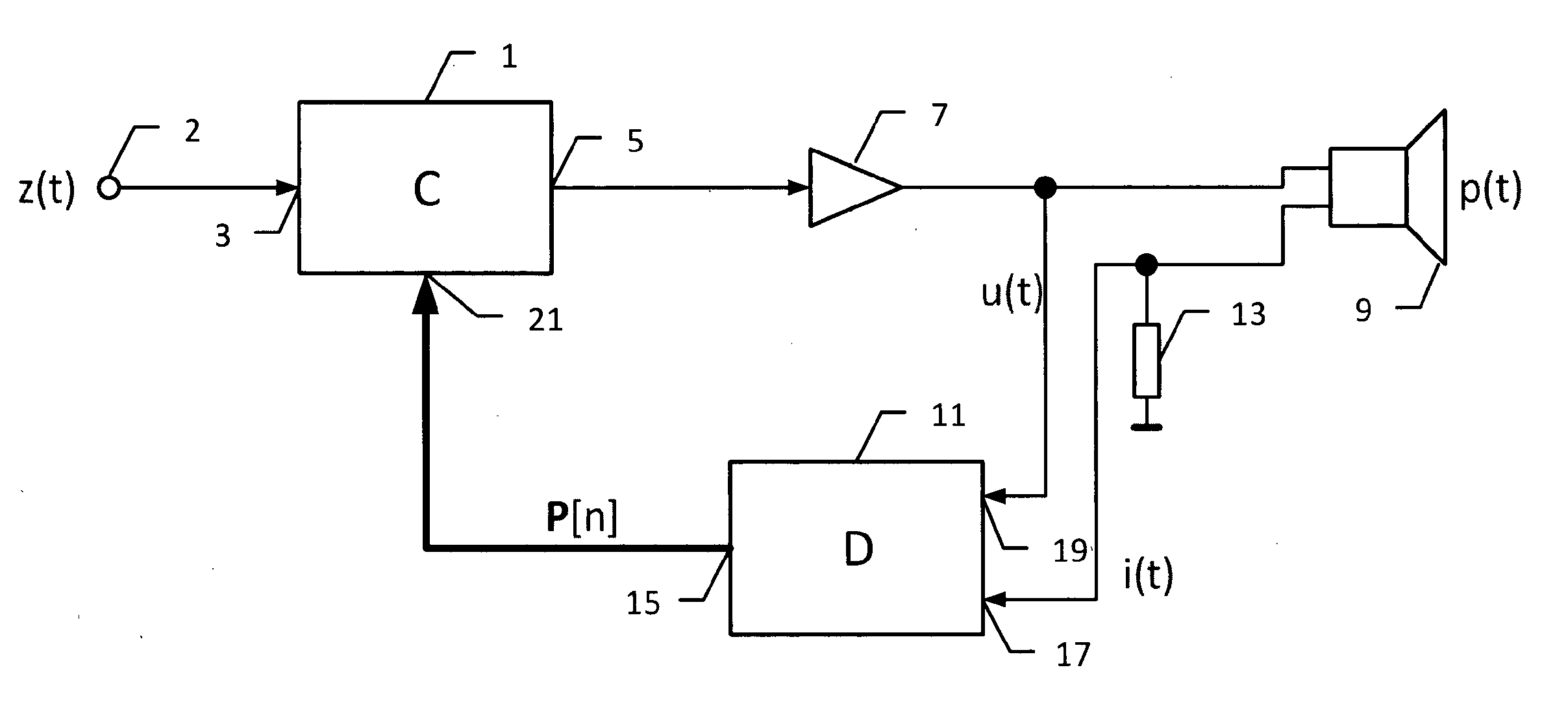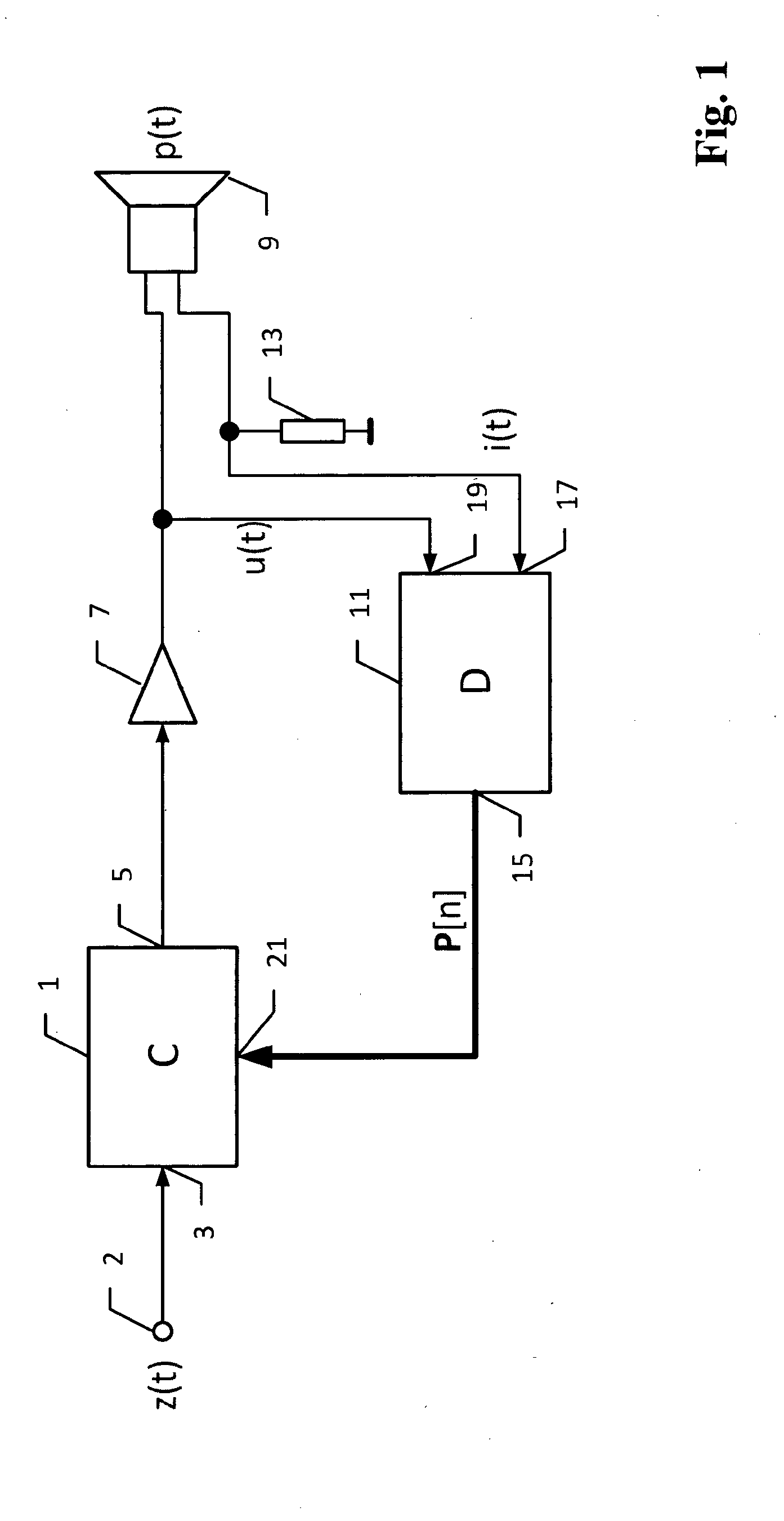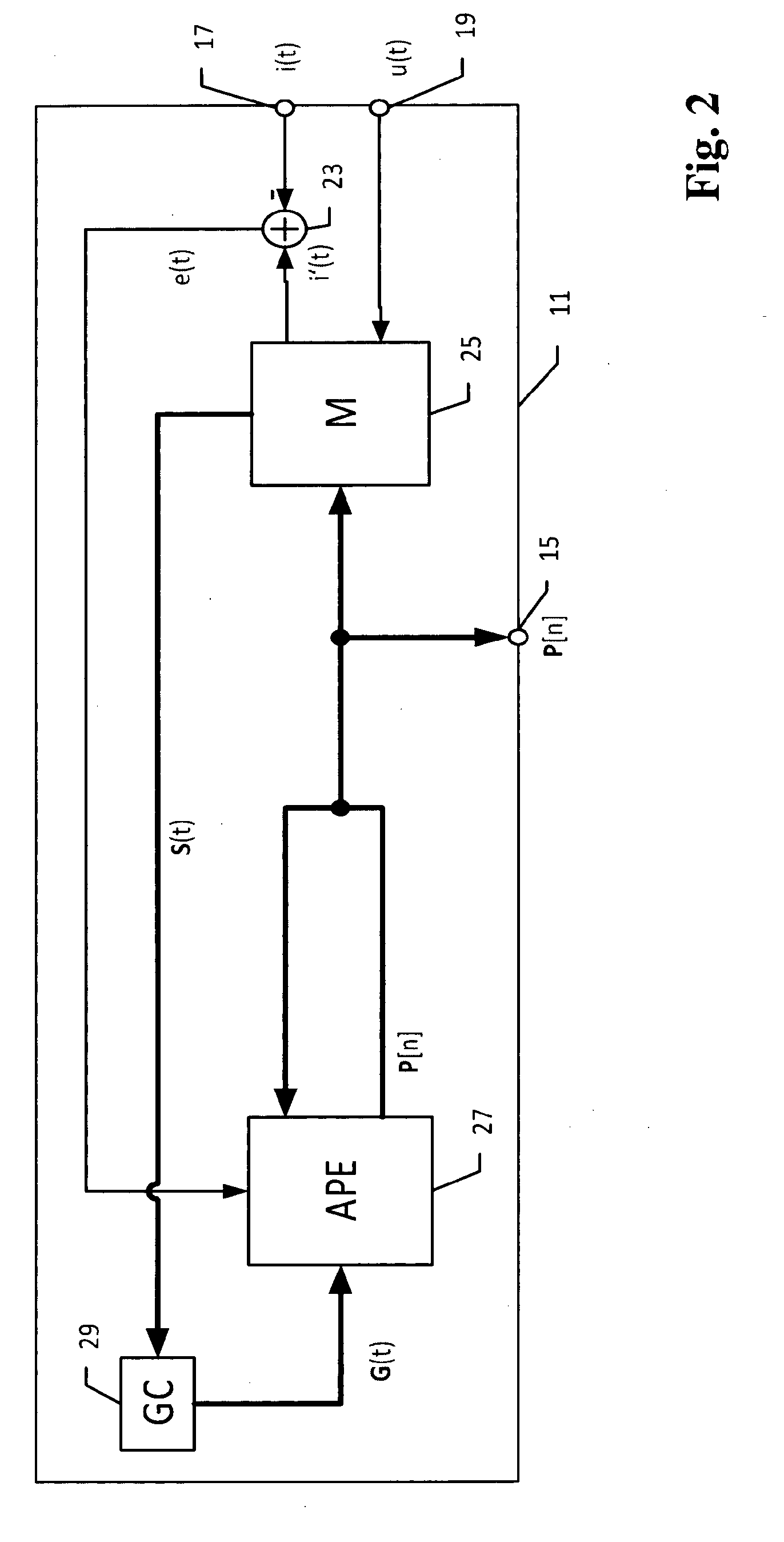Method and arrangement for controlling an electro-acoustical transducer
- Summary
- Abstract
- Description
- Claims
- Application Information
AI Technical Summary
Benefits of technology
Problems solved by technology
Method used
Image
Examples
first embodiment
[0065]The permanent estimator 49 in the detector in FIG. 4 receives a null vector μ(t)=0 at the control input 45 which deactivates the decay constants μj in Eqs. (30) and (32).
[0066]FIG. 6 shows an embodiment of the detector 11 for determining the instantaneous resistance variation rv(t) and the predicted resistance variation rp(t). A power estimator 53 is provided with measured current signal i(t) and voltage signal u(t) and generates the instantaneous electric input power Pe(t) of the transducer 9 according to Eq. (17). The resistance predictor 58 provided with input power Pe(t) and parameter vector P generates the predicted resistance variation rp(t) and the following integrator 56 generates the instantaneous resistance variation rv(t) according to Eq. (18). The adder 57 provided with the slow time varying parameter Re and resistance variation rv(t) produces the instantaneous voice coil resistance Rat) in accordance with Eq. (23). The variables rp(t), rv(t) and Re,i(t) are suppli...
embodiment 2
[0086]3. Arrangement , wherein said activator (41) has an input provided with said parameter vector (P[n]), wherein said activator (41) is further configured to: generate a value describing the temporal variance of each parameter in said parameter vector (P[n]); and to generate said activation signal (μ(t)) which deactivates the updating of a parameter having the lowest value of the temporal variance while activating the updating of other parameters having a higher variance.
[0087]4. Arrangement according to embodiment 2 or 3, wherein said activator (41) is provided with the error signal (e(t)) from the error generator (23) or with the parameter vector (P[n]) from said parameter estimator (27), wherein said activator (41) is further configured to: generate an importance value, that describes the contribution of each parameter to the modeling of transducer (9); and to generate said activation signal (μ(t)) which deactivates the estimation of a parameter having an importance value that...
embodiment 7
[0092]8. Arrangement , wherein said compensator (79, 77) comprises: a low-pass filter (79), having an input provided with said control output signal (w(t)) and having an output generating a low-frequency signal (y=(t)) based on said control output signal (w(t)); and a subtracter (77) generating said compensated signal (y(t)) by calculating a difference between said input signal (z(t)) and said low-frequency signal (y=(t)).
[0093]9. Arrangement according to any of the preceding embodiments, wherein said controller (1) contains a gain controller (95), having an input provided with said parameter vector (P[n]) from said parameter input (21) and an output (91) generating a control gain (Gw) which depends on the validity of said parameter vector (P[n]); said controller (1) contains a transfer element (65), having an input provided with said input signal (z(t)) and an output, wherein said parameter vector (P[n]) determines the transfer behavior between the input and the output of the trans...
PUM
 Login to View More
Login to View More Abstract
Description
Claims
Application Information
 Login to View More
Login to View More - R&D
- Intellectual Property
- Life Sciences
- Materials
- Tech Scout
- Unparalleled Data Quality
- Higher Quality Content
- 60% Fewer Hallucinations
Browse by: Latest US Patents, China's latest patents, Technical Efficacy Thesaurus, Application Domain, Technology Topic, Popular Technical Reports.
© 2025 PatSnap. All rights reserved.Legal|Privacy policy|Modern Slavery Act Transparency Statement|Sitemap|About US| Contact US: help@patsnap.com



